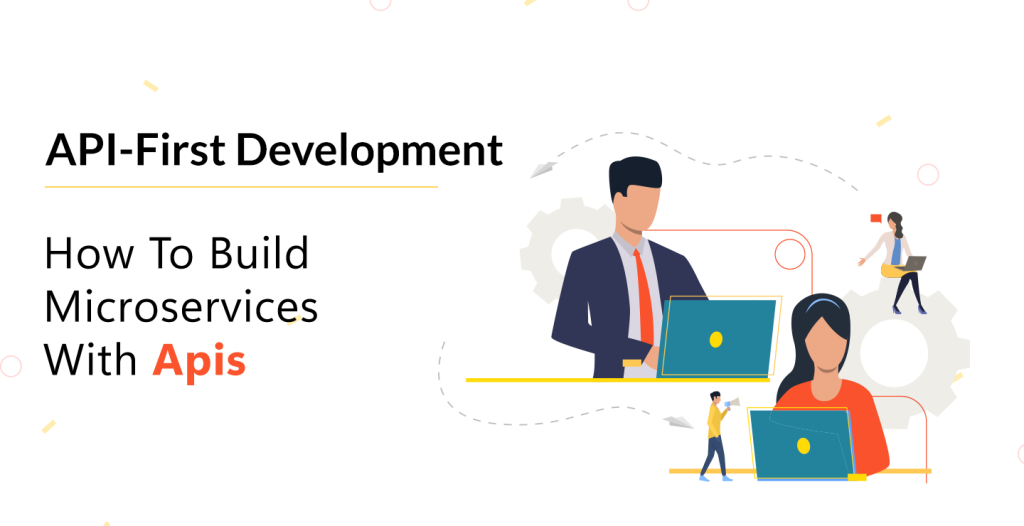
API-first development is a revolutionary advancement for software engineering. It offers an exciting opportunity to build microservices that are connected with APIs, allowing users to access data and services from different sources quickly and seamlessly. This approach has already been leveraged by some of the world’s most successful companies who have seen great success in product delivery, cost savings and customer satisfaction.
But what exactly is API-first development? How does it differ from traditional methods? And how can you use this strategy to make your products stand out? In this article, we’ll examine these questions and discuss why API-first development should be part of every business’ toolkit. We’ll also go over the steps needed to successfully implement this type of development process into your existing workflow.
For those looking to embrace innovation, API-first development provides a powerful way to create new solutions that will delight customers while helping businesses become more competitive. Read on to learn more about this empowering technology that could revolutionize the way you develop software!
Definition Of Api-First Development
API-First Development is a revolutionary concept that has the power to revolutionize development processes. It’s an approach to software engineering and architecture where APIs are created first, before any code. This means that developers can focus on creating robust microservices with APIs as their foundation.
An API (Application Programming Interface) is a set of protocols, routines, and tools for building application software. APIs make it easier for different applications to talk to each other and share data in a secure way. Microservices are small, independent services built using APIs which enable companies to quickly change or add features without affecting the entire system’s stability or integrity. Building these services requires an efficient workflow and careful planning in order to ensure all parts work together seamlessly.
API-first development helps bridge the gap between frontend and backend by allowing teams to create well-structured APIs they know will be needed upfront while also providing flexibility when making changes down the road. This makes it faster and easier for developers to collaborate with one another while still keeping control over how their code works together. By having an understanding of what kind of data needs exchanged beforehand, teams can build better quality products in less time than traditional approaches would allow. Transitioning into this new methodology allows organizations to take advantage of the benefits provided by modern technologies like cloud computing, serverless architectures, and more—allowing them even greater freedom when developing applications.
Benefits Of An Api-First Approach
API-first development is a powerful technique that provides many benefits when building microservices. This approach offers robust tools for usability, design and access control, allowing developers to create highly customized solutions quickly and efficiently. It also simplifies the process of maintaining codebases across multiple services, helping teams achieve higher levels of scalability and reliability with their products.

With API-first development, the creation of an intuitive user experience starts at the beginning of the project by leveraging existing APIs to create secure endpoints. This allows developers to focus on creating reliable data structures from which they can build custom applications without having to worry about authentication or authorization protocols. Furthermore, this approach allows developers to easily change or add new features within their system as needed with minimal disruption in service.
By capitalizing on the advantages of API-first development, users have access to better performing systems that are easier to debug and maintain over time. Creating efficient workflows and ensuring strong security measures throughout all processes helps organizations ensure consistent performance while avoiding costly downtime or delays in product delivery. The ultimate goal is providing customers with high quality experiences regardless of what platform or device they’re using.
The benefits of API-first development make it an attractive choice for businesses looking to stay competitive in today’s market; however, there are still some important considerations such as design principles and best practices that must be taken into account before starting any project.
Design Principles And Best Practices
Adopting the correct design principles and best practices is essential for successful API-First development. With such a system, one must be sure to consider all of the components involved in order to create robust microservices that are easy to maintain. Like a puzzle, each piece needs to fit together perfectly in order for it to function as intended.
Here are some key elements to keep in mind when designing microservices with APIs:
Modularization:
Breaking down complex tasks into smaller chunks and building independent services can help reduce complexity while increasing scalability and reusability.
API Naming:
Developing logical, consistent names for your APIs will make them easier to use and understand by developers.
Response Formatting:
Structuring data sent back from an API call so that it is easily parsed by other systems helps ensure interoperability between different services.
Data Validation:
Validating incoming requests against predefined criteria helps guarantee the integrity of data being passed through microservices.
Caching Strategies:
Implementing caching strategies at multiple levels (e.g., server side or client side) can improve performance and reduce latency issues due to high traffic volumes or large datasets.
These core principles provide a solid foundation for any developer looking to build reliable services using APIs; however, there are still more strategies needed for success. By understanding how these pieces fit together and leveraging available tools, teams can optimize their efforts towards creating effective solutions quickly and efficiently without sacrificing quality or security.
Strategies For Building Microservices With Apis
API-first development is quickly becoming a go-to strategy for building microservices. This approach allows developers to create an application programming interface (API) layer that can be used across multiple platforms and services. By leveraging APIs, developers are able to quickly design and deploy new features with minimal effort and cost. With this in mind, it’s important to understand the best strategies for building microservices with APIs.
The first step in API development is designing an effective architecture. An efficient infrastructure will allow different components of your system to communicate seamlessly while also ensuring scalability and performance as demand increases. It’s also important to consider how you plan on integrating existing systems into your environment so they can interact with the API layer without disrupting functionality or introducing security vulnerabilities.
Once the foundational architecture has been established, the next step is to implement an API management solution that will enable easy access control, monitoring, logging, authentication, authorization, versioning, analytics, rate limiting and more. By using a cloud-based service such as Amazon Web Services or Microsoft Azure, organizations can take advantage of prebuilt tools designed specifically for managing APIs at scale. Additionally, these solutions often provide helpful insights into usage patterns which can help improve user experience over time by enabling developers to identify areas of improvement within their applications.
By employing these strategies when developing microservices with APIs, organizations can ensure their projects remain up-to-date and secure while providing users with reliable experiences every time they interact with them. The key is understanding what type of architecture works best for your needs and then implementing solutions that facilitate maximum usability from start to finish.
Designing Apis For Maximum Usability
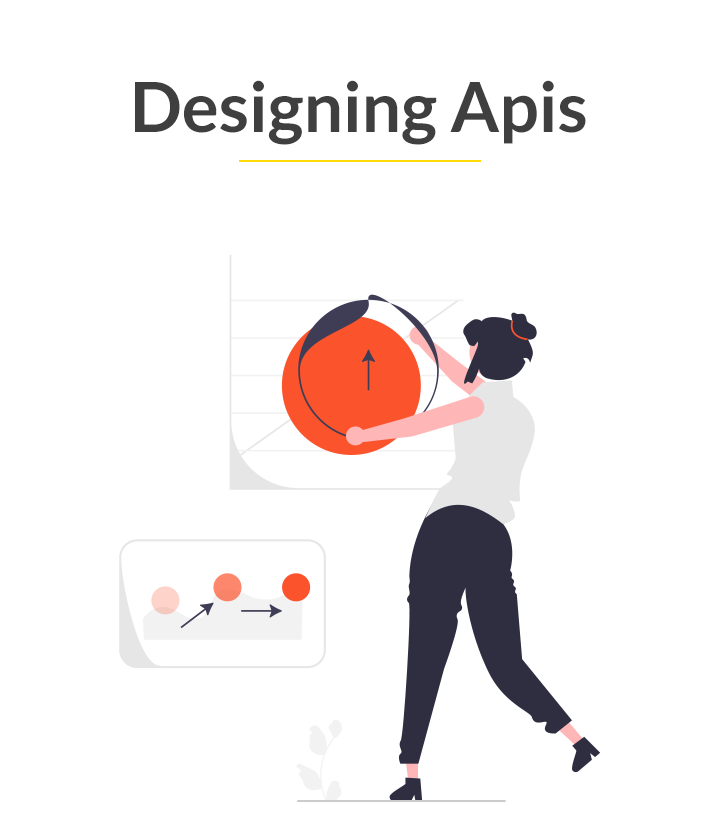
Designing APIs for maximum usability requires forethought, strategy, and dedication. By taking the time to consider design principles, create comprehensive usability guidelines, and execute them with precision and clarity, developers can ensure that their API is well-crafted and offers a delightful user experience.
Developers should start by understanding their users’ needs, then decide on an appropriate data format that meets those needs while still being easy to work with. Access control should be implemented to limit access only to authenticated users who have permission to use the resource in question. Additionally, pay attention to the naming of endpoints; they need to be simple enough for people unfamiliar with your product or service to understand quickly what each endpoint does without having to study documentation first. Finally, make sure any changes you make are documented clearly so everyone involved knows precisely how it affects their workflow.
By following these steps every step of the way, developers will be able to craft quality APIs that offer maximum usability for all users – this leads directly into securing APIs with access control measures.
Securing Apis With Access Control
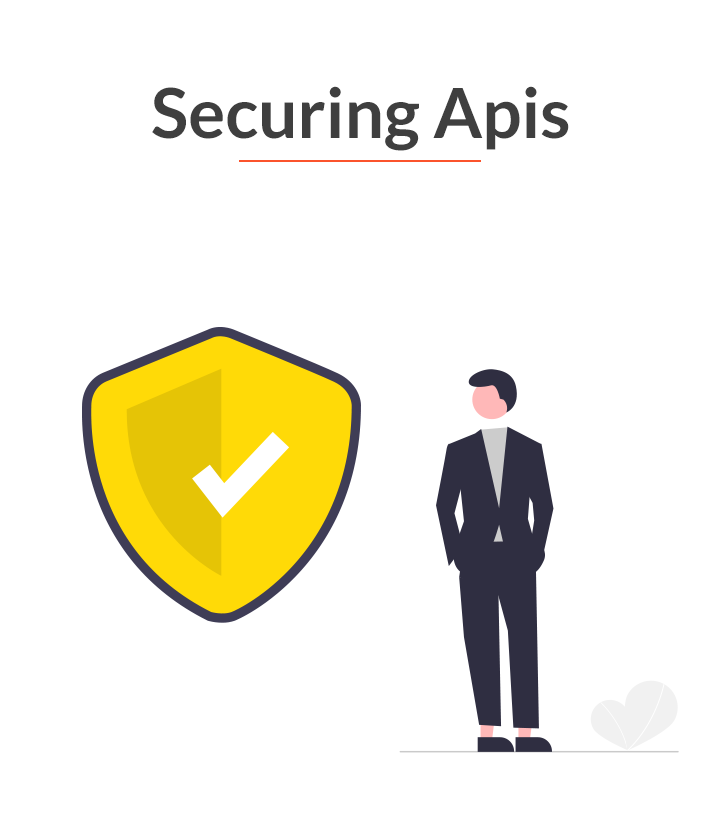
In order to ensure api security, it’s essential to implement access control. Access control apis provide a layer of protection against unauthorized access, and can be used in combination with other authentication methods for an even more secure system.
The first step is to identify which types of users should have access to the APIs. This will prevent any unwanted visitors from gaining entry into the system. Once identified, user credentials must then be established in order to grant or deny permission levels that align with each user’s role within the organization. The use of authorization tokens allows you to manage permissions on a per-user basis by validating their identity and granting them appropriate privileges. These tokens can also include usage limits and expiration dates so that access remains limited only when necessary.
When it comes to data privacy, encryption is key! Using industry standard protocols like TLS/SSL provides an extra layer of security, protecting sensitive data while being transmitted between systems. Additionally, organizations can employ measures such as end-to-end encryption and tokenization techniques to further shield information from potential threats posed by malicious actors.
A proactive approach towards securing your APIs requires continuous monitoring and auditing processes that check for vulnerabilities regularly. By utilizing automated testing tools, administrators can quickly detect flaws before they become exploited by attackers – helping protect applications from potential misuse or abuse without sacrificing performance or scalability requirements.
Managing Api Versioning And Deprecation

API versioning and deprecation are two essential components of API-first development. APIs must not only be designed with a clear vision for the future, but they must also have an established strategy to accommodate version changes over time. This ensures that your API remains up-to-date with new technology standards while maintaining compatibility with existing systems.
A successful API version control system will require careful planning in order to manage both current and historical versions of an API. Keeping track of each iteration can help developers keep their code base organized by providing them with a comprehensive version history. By understanding the full scope of changes made throughout the life cycle of an API, developers are able to quickly identify potential issues or errors stemming from unsupported legacy versions. Furthermore, having access to a detailed timeline allows developers to better plan for upcoming releases by making sure all necessary features are properly implemented before launching a new version.
In addition, it is important for organizations to establish appropriate methods for migrating users from one version of an API to another without disrupting service availability or data integrity. A well thought out deprecation strategy should take into account user feedback when determining which older versions need to be retired and how best to transition those users onto newer versions without compromising on performance or reliability. Taking these steps makes sure that you’re always ahead of the curve when adopting emerging technologies and keeps your customers satisfied knowing that their software is secure and ready for use at any given time.
To ensure quality and reliability, rigorous testing needs to be performed prior to releasing any major updates or upgrades in production environments.
Testing Apis To Ensure Quality And Reliability
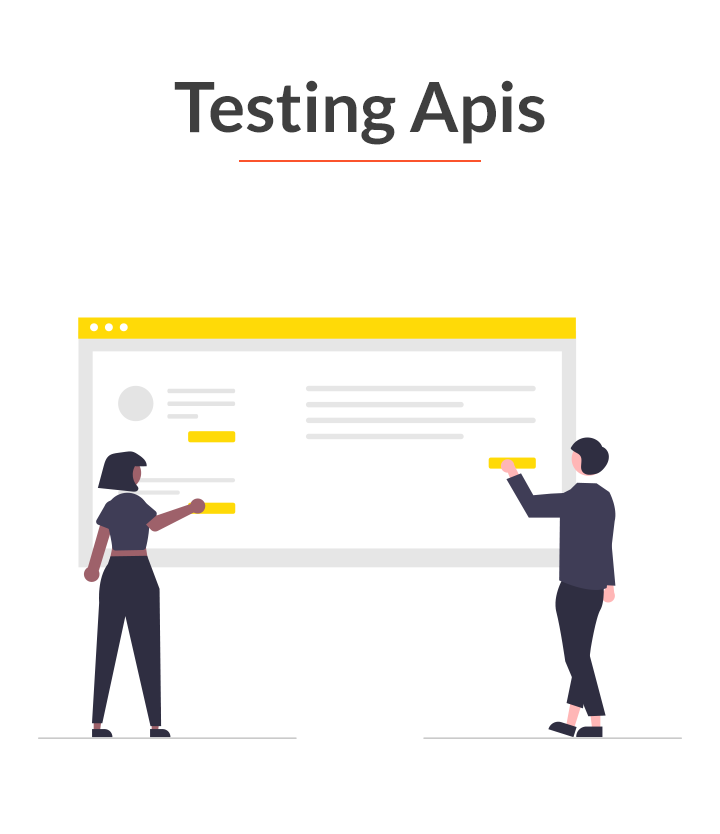
Testing APIs is essential for ensuring the quality and reliability of microservices. To ensure that API-driven applications meet customer expectations, it’s important to test them thoroughly before releasing them into production. Testing helps identify defects or flaws in code which may affect the performance, functionality, and scalability of an application.
To achieve successful API testing, developers should integrate automated tests into their development process. Automated tests can save time and effort by eliminating manual errors during regression testing cycles. Additionally, API automation ensures consistency so that complex scenarios are accurately tested each time a new version is deployed. Automation also enables fast feedback loops which enable rapid iteration on changes and greater control over how features are released.
Functional testing verifies that all components work together as expected while load testing simulates user traffic to determine if an application will continue to perform well under increased usage levels. It’s also important to verify code quality with static analysis tools that detect issues such as potential security vulnerabilities before they become catastrophic problems later down the line. By running these tests regularly you can quickly identify any areas where your code needs improvement and act accordingly – resulting in improved reliability and trustworthiness of your APIs overall. With comprehensive testing strategies in place, organizations can confidently build robust systems backed by reliable APIs that deliver outstanding experiences for end users.
Monitoring Performance And Availability

Monitoring the performance of your APIs is essential for ensuring their overall success. Performance metrics give you an up-to-date understanding of how well they’re running and can alert you to problems before they become serious issues. Thankfully, there are a variety of monitoring tools available that make it easy to keep track of API performance.
Availability testing is also important when developing APIs since user experience suffers if an API becomes unavailable or has poor response times. You should be able to see system logs in real-time so that you can identify the source of any errors quickly and accurately. It’s also helpful to have automated alerts set up so that you know as soon as something goes wrong with your APIs.
By taking proactive measures like these, you can ensure that your APIs remain reliable even under heavy traffic loads. This will not only boost customer satisfaction but also help maintain the integrity of your data systems by preventing costly downtime due to API failures. With this knowledge under our belt, we can move on to automating the deployment process for our microservices with confidence.
Automating The Deployment Process
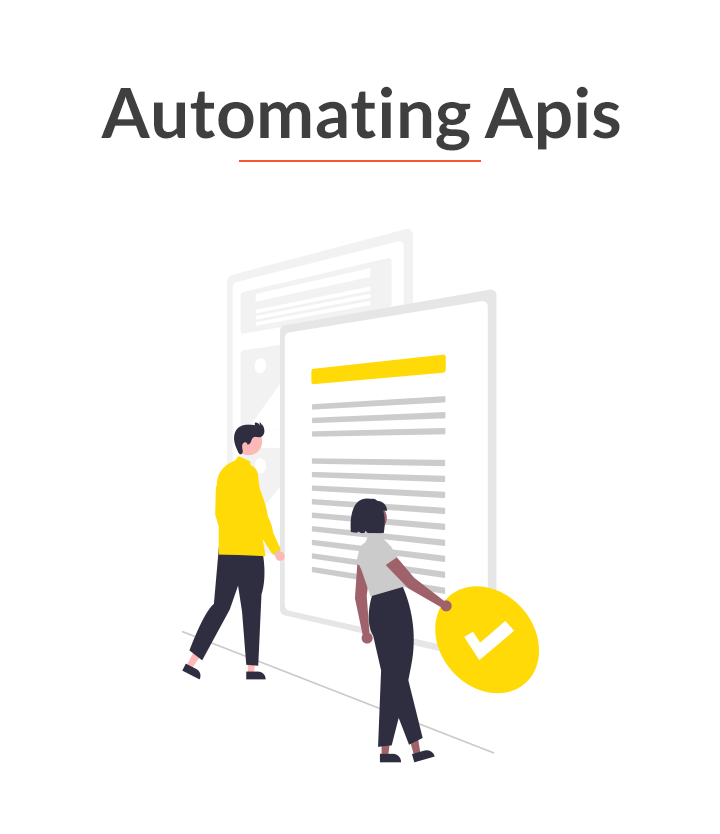
The world of technology is ever-changing and rapidly evolving. To keep up with the pace, developers must automate processes whenever possible to ensure efficient delivery and deployment of products. Automating the deployment process for microservices with APIs is no exception.
Deployment automation streamlines the development process by eliminating manual steps from the traditional workflow. It enables teams to deploy applications quickly and accurately without sacrificing quality or control. This saves time, reduces errors, and increases productivity, as teams can focus on developing features instead of manually testing each release.
Automation also ensures that all changes are tracked throughout the entire deployment process, so teams can easily identify any issues that arise during production deployments. Furthermore, automated deployments allow you to roll out new versions faster while still ensuring system stability and scalability. By automating your API deployment process, you’ll reduce risk while simultaneously increasing speed and agility in your development environment.
By using a combination of advanced tools such as continuous integration servers combined with version control systems like GitLab or Bitbucket, organizations can manage their deployments more efficiently than ever before—and this makes everyone’s life easier! Automated deployments provide greater flexibility over how changes are implemented into existing environments which ultimately leads to increased customer satisfaction due to reliable product updates delivered at rapid speeds.
Conclusion
The API-first development approach is a game-changer when it comes to developing microservices. It provides developers with the flexibility and scalability needed for modern applications, as well as improved security measures that can keep data safe. With all of these advantages, there’s no reason why any developer shouldn’t use this approach!
If you’re thinking about making the switch from traditional development methods to API-first development, do not hesitate! You won’t regret it – guaranteed! By following best practices such as proper versioning and deprecation management, you’ll be set up for success no matter what kind of application or service you’re building. So don’t wait – get started today and unlock the potential of your project through APIs!
How GTCSYS Helps you by providing API Development services
At GTCSYS, our API Development services helps you to create powerful and secure APIs that will enable your business to interact with other applications, platforms, and services. Our experts are well-versed in developing APIs for all kinds of projects, from mobile to web applications, and from enterprise to consumer-based solutions. We understand the importance of security and robustness, so we make sure to use the best practices to ensure that your APIs are reliable and secure. Our team has the expertise to create custom APIs that are tailored to your specific needs, with features that can be easily integrated into other applications. We also provide ongoing support and maintenance for the APIs we develop, so you can rest assured that your project will stay up to date and running smoothly.
Frequently Asked Questions
When it comes to software development, there are two major approaches: API-first and traditional development. The former places an emphasis on APIs as the primary method of developing microservices, while the latter relies on alternate methods such as coding from scratch or using frameworks. Both have their advantages and disadvantages when building applications, but in this article we’ll discuss why API-first is a powerful option for modern developers.
Firstly, working with APIs helps streamline data handling and scalability between services. Because all communication occurs through HTTP requests and responses, developers can easily integrate different services into a single application without having to worry about compatibility issues. Additionally, since most APIs come with built-in authentication layers, they provide excellent security protocols that prevent unauthorized access to sensitive information stored within them.
API-first development also offers many advantages over traditional methods:
Time Savings: By leveraging existing libraries and modules instead of creating everything from scratch, developers can save time by quickly integrating third party services into their applications. This allows them to focus more on implementing features rather than writing code.
Cost Efficiency: With no need to purchase expensive frameworks or licenses for proprietary tools, developers can keep costs down significantly by utilizing open source solutions provided by public APIs.
In addition to these benefits, API-first development provides an easy way for businesses to stay competitive in today’s ever-evolving digital landscape. Instead of reinventing the wheel every time new technologies emerge, companies can leverage existing infrastructure and use ready-made components from popular providers like Google Maps or Stripe Connect in order to develop cutting edge applications faster than ever before.
By adopting an API-first approach for web and mobile app development projects, organizations can reduce complexity while increasing flexibility—allowing them to build innovative products at scale that meet customer needs better than ever before. When it comes to data handling, API-first development provides a great opportunity for organizations. With this approach, businesses can leverage the power of APIs to store and access their data securely while integrating with other services and platforms. Furthermore, they are able to analyze data quickly and efficiently in order to make better decisions.
Here is why API-first development is advantageous when managing your data:
Data Storage – Store large amounts of structured or unstructured data on different servers using APIs.
Data Security – Protect sensitive information using authentication methods like OAuth 2.0 & JSON Web Tokens (JWT).
Data Access – Leverage APIs to retrieve specific pieces of requested information from databases while maintaining security protocols.
API Integration – Combine various types of applications with one another through open-source integration tools such as RESTful APIs and GraphQLs.
Moreover, an API-first approach allows businesses to gain valuable insight about customers by analyzing collected data for statistical purposes. Companies can also use analytics software that applies AI technology which helps them uncover patterns within customer behavior in real time. All these features enable companies to stay ahead of competition in today’s digital economy by offering the best user experience possible.
The benefits of API-first development go beyond what traditional approaches have been limited to; making it easier than ever before for organizations to manage their complex datasets without compromising on quality or speed. As more developers become aware of its potential, we will continue seeing an increase in adoption rates throughout the industry—making API-first development an invaluable asset for any company looking to bring innovation into their operations. An API-first approach is an innovative way to unlock scalability for your microservices. It’s a powerful tool that can help you handle data more effectively and securely, leading to increased flexibility for your business operations. With this approach, you don’t have to worry about compatibility issues with different technologies because everything works in tandem over the internet – no matter what kind of device or software architecture you’re using.
Using an API-first strategy means that each service can be developed independently from the others. This allows you to scale up quickly as needed without having to make changes across multiple services at once. Furthermore, since the APIs are built into each individual service, they can easily integrate with other systems while still maintaining security protocols throughout the system. This makes it easier to keep track of user access rights and ensure that only authorized users are able to view sensitive information.
The advantages of API-First development become even clearer when considering how much time and effort it saves compared to traditional methods. By utilizing this methodology, businesses can avoid dealing with complexities associated with legacy systems which often require manual integration between components. Additionally, by taking advantage of cloud computing resources such as serverless architectures and containerization technology, organizations can reduce costs significantly while also increasing their ability to stay agile and adaptive in response to changing market conditions.
In summary, an API-first approach offers tremendous potential for improving scalability within microservice ecosystems. The benefits extend beyond cost savings and improved security; developers benefit from faster iterations on projects due to reduced complexity as well as increased agility when responding to customer demands or addressing new challenges presented by competitors. Organizations embracing this approach will find themselves better prepared than ever before for success in today’s digitally driven world. API security is an important consideration for any organization that wants to safely and securely use APIs. It enables organizations to protect data, prevent malicious access, and ensure secure communication between applications. With the increasing popularity of API-first development approaches, it’s essential for developers to understand how best to secure their apis.
When securing APIs, a combination of authentication, authorization, and access control are key elements in keeping users safe from cyber threats. Authentication identifies who is using the api and authorizes them to do certain actions. Authorization helps define which resources they can access while access control determines what level of permission each user has when accessing these specific resources. Data validation also plays a role in ensuring only valid data reaches the application so that malicious requests don’t make it through.
In order to ensure your APIs are properly secured, you need to evaluate all aspects of its design including authentication methods, authorization rulesets, access control policies and more. A robust system should provide multiple layers of protection across all components and be regularly monitored for potential vulnerabilities or weaknesses in the security model. By understanding how best to secure your APIs with modern tools and techniques you can confidently create powerful microservices without sacrificing security along the way! Are you tired of your APIs going out of date? Are you fed up with having to constantly manage versioning and deprecation strategies? Well, worry no more! Today we’re here to talk about how to ensure that API versioning and deprecation are managed properly.
Let’s start by talking about the importance of api-versioning. When developing an application, it’s essential to have a clear understanding of which versions of the API are available for use. This helps ensure that users can easily access all necessary features without worrying about compatibility issues. Furthermore, when rolling out new features or updates, using a versioning strategy ensures that only certain versions receive these changes while older ones remain unchanged. In this way, developers can make sure their applications stay up-to-date without breaking existing functionality.
Now let’s look at api-deprecation. Deprecating old versions is key for keeping applications secure and running smoothly. By removing outdated components from circulation, developers can minimize potential vulnerabilities in their codebase and reduce the chance of data breaches or other security disasters. A well thought out deprecation strategy will also help prevent user confusion when navigating different versions as they should be aware which ones are active and which are deprecated.
When it comes down to it, managing API versioning and deprecation effectively requires careful planning and good communication between teams within the development process. A solid version management plan should include both a comprehensive versioning system as well as guidelines on when each version should be retired or updated so that everyone involved is on the same page regarding what needs to happen next. With effective implementation, companies can maintain reliable APIs equipped with all the latest features while ensuring complete safety and compliance with regulatory standards.What Is The Difference Between Api-First Development And Traditional Development?
What Kind Of Data Can Be Handled With An Api-First Approach?
How Does An Api-First Approach Improve Scalability?
What Is The Best Way To Secure Apis?
How Can I Ensure Api Versioning And Deprecation Are Managed Properly?
Conclusion
The API-first development approach is a game-changer when it comes to developing microservices. It provides developers with the flexibility and scalability needed for modern applications, as well as improved security measures that can keep data safe. With all of these advantages, there’s no reason why any developer shouldn’t use this approach!
I truly cannot overstate how much API-first development has changed my workflow. Before I started using this method, I had to spend hours dealing with tedious manual tasks. Now, I’m able to work faster and more efficiently than ever before. Not only have I saved time on mundane tasks, but also money due to the cost savings associated with scaling services quickly and effectively in an automated way.
If you’re thinking about making the switch from traditional development methods to API-first development, do not hesitate! You won’t regret it – guaranteed! By following best practices such as proper versioning and deprecation management, you’ll be set up for success no matter what kind of application or service you’re building. So don’t wait – get started today and unlock the potential of your project through APIs!

